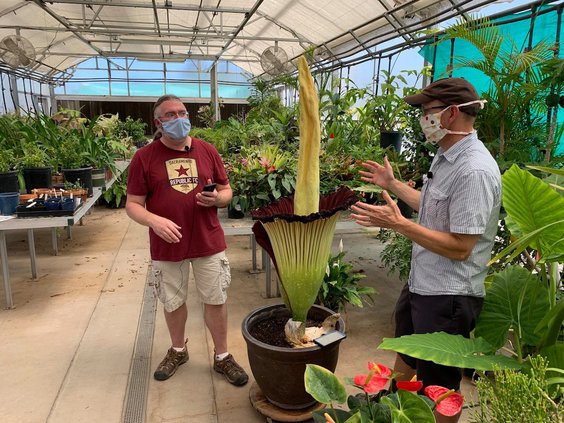A once-in-a-decade event took place at Stanislaus State this week when the university’s resident corpse flower bloomed for the first time.
Flower blooms at Stan State in rare event





